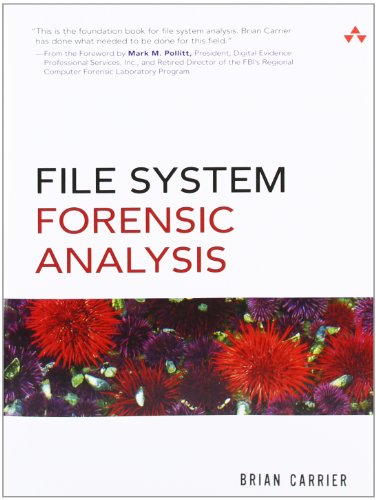File System Forensic Analysis epub
Par baron tomas le lundi, avril 10 2017, 08:57 - Lien permanent
File System Forensic Analysis. Brian Carrier

File.System.Forensic.Analysis.pdf
ISBN: 0321268172,9780321268174 | 600 pages | 15 Mb

File System Forensic Analysis Brian Carrier
Publisher: Addison-Wesley Professional
Back when I was first figuring out how to acquire the Samsung Galaxy Camera, I did a file system dump using Cellebrite's UFED Logical. I was asked to speak on the topic of “Linux Filesystems”, and I have chosen to focus on the ext2 and ext3 filesystem data structures. Reading Brian Carrier's book "File System Forensic Analysis" [1] is essential for understanding the structures of the NTFS filesystem and this resource was heavily used in the making of this plugin. The New Technology File System (NTFS) is a file system developed and introduced by Microsoft in 1995 with Windows NT. This new file system is proprietary and requires licensing from Microsoft and little has been published about. The $UsnJrnl file contains a wealth of information about file system activity which can provide more context about what occurred on a system. Images/Analysis Challenges Lance's Forensic Practicals (#1 and #2) (no EnCase? FAT File System - creation and deletion of files - computer forensics aspect. Most digital evidence is stored within the computer's file system, but understanding how file systems work is one of the most technically challenging concepts for a digital investigator because there exists little documentation. Grid File Systems: A Forensic Analysis Joshua Boyd College of Information Science and Technology, Radford University Radford, Virginia 24142, United States of America and. The guys at X-Ways Forensics introduced the ability to traverse for and process previously existing files from Volume Shadow Copies and System Volume Information files. File System Forensic Analysis : Let's create a directory in our /root (the root user's home) directory called /root/ntfs_pract/ and place the file in there.